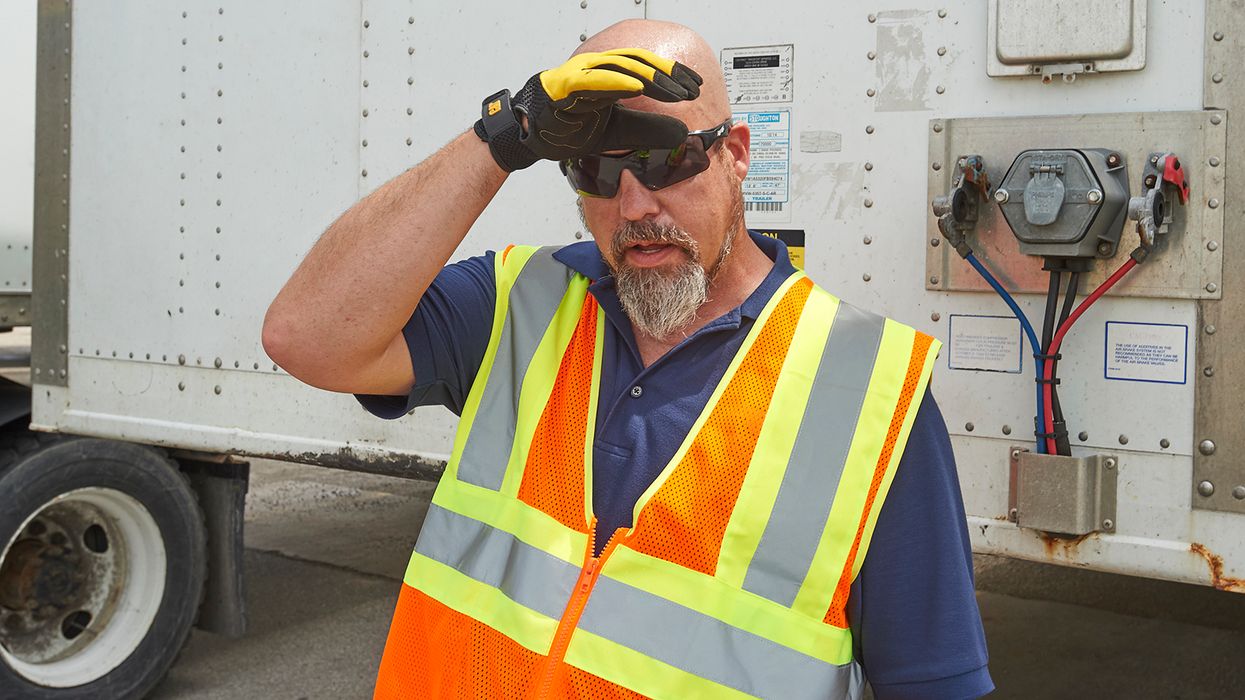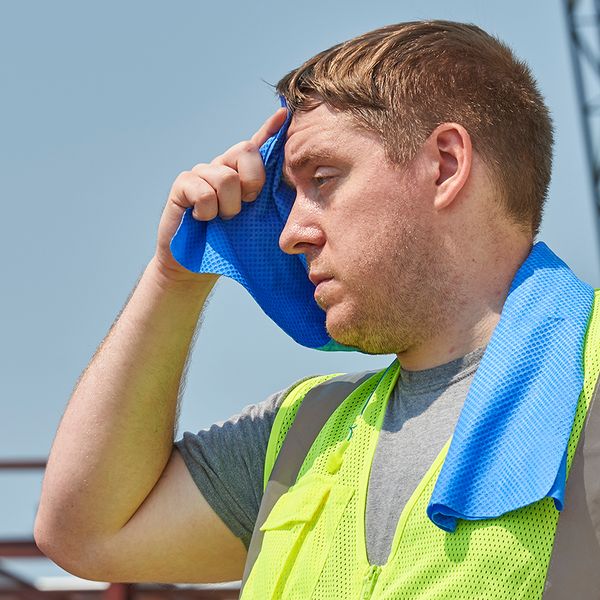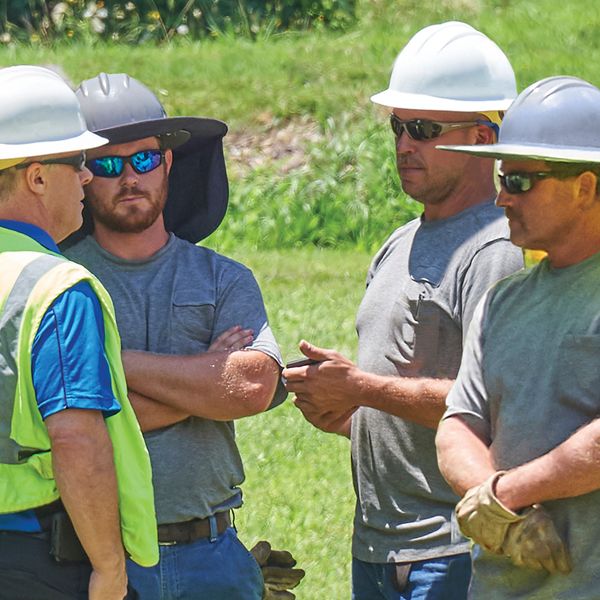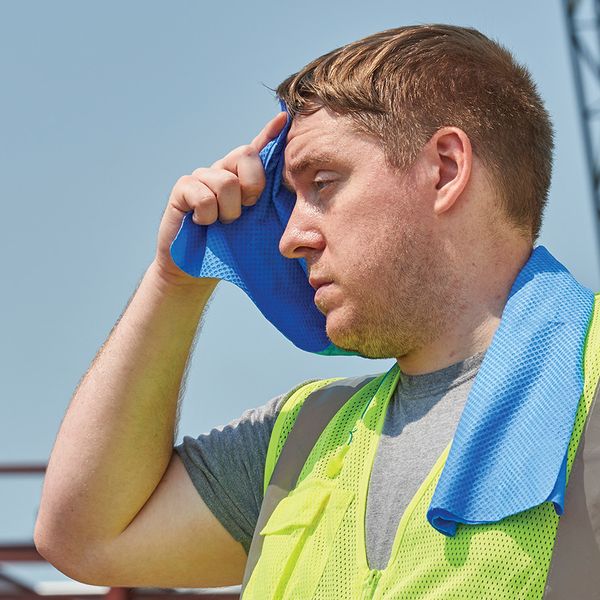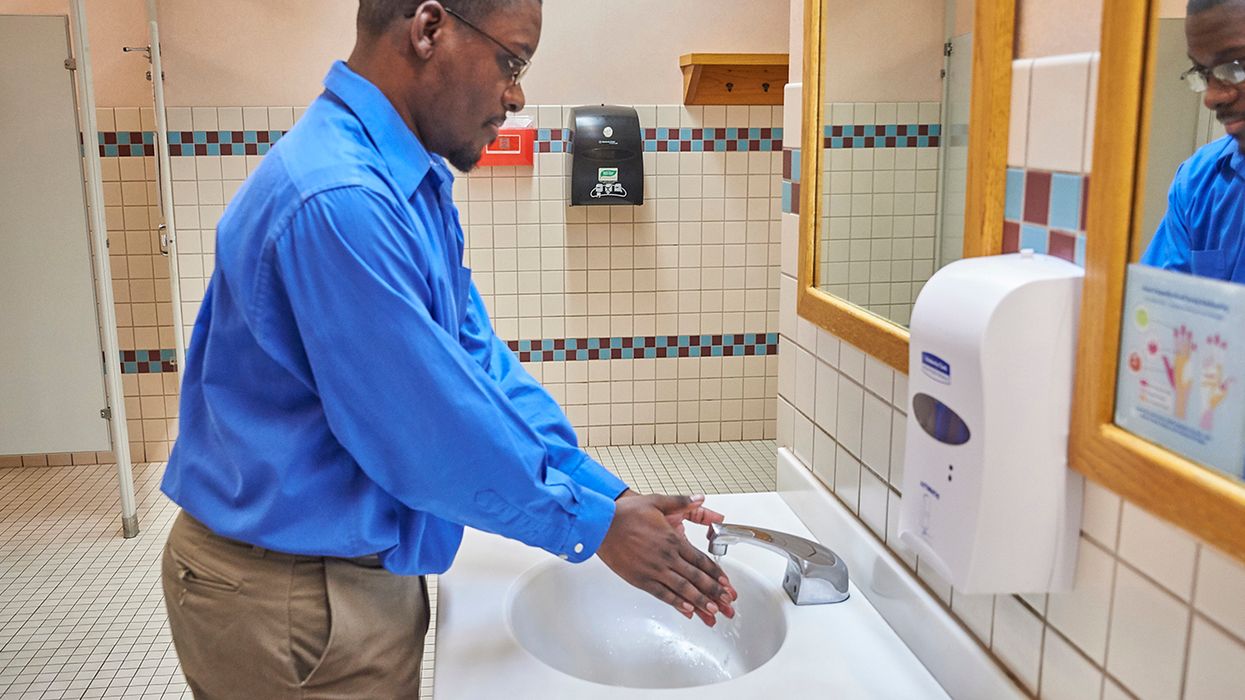Heat stress prevention survey—The results are in!
America has experienced extraordinary heat over the past few summers, prompting OSHA to announce a National Emphasis Program (NEP) in April 2022 to ensure employers are taking steps to protect their workers from heat stress. Employers nationwide should evaluate and implement heat safety programs to protect their workers from heat stress injuries. To better protect people and the businesses they run, J.J. Keller’s Center for Market Insights performed a heat stress analytics poll to survey what employers are currently doing to address heat stress prevention. The results are intended to help employers identify key safety measures they may not have considered.
The Heat Stress Pulse Poll was distributed to 10,829 companies with SIC codes in the manufacturing, utilities, construction, and wholesale industries. The survey was aimed specifically at personnel with EHS, compliance, or risk job roles who were asked to consider both indoor and outdoor work activities. Most respondents (50%) represented manufacturing, followed closely by construction (39%). Additional respondents represented agriculture, mining, services, transportation, utilities, and other industries.
In total, J.J. Keller received feedback from 260 participants, with 82% of respondents having a job that involves heat stress risk. Poll respondents represented various areas of the country to provide a good representation of heat stress challenges. Companies from Ohio, Pennsylvania, Florida, Texas, and California participated in the survey. These companies had employee counts ranging from more than 2500 (85%) to as few as 10 (7%), with the majority of respondents having 101-250 employees (24%).
The results are in
It is clear from the poll results that employers have taken heat stress as seriously as OSHA. Analysis of survey results revealed that over half of the poll survey respondents (58%) work both inside and outside throughout their workday, with 15% working primarily outdoors. Their main heat-related stress factors were:
- Machinery and equipment that produces heat (63%) and
- A level of required PPE that can enhance the risk of heat stress (56%).
Machinery often identified as throwing off additional heat include heavy equipment and forklifts, furnaces or ovens, steam systems, boilers, conveyance equipment, and working with hot asphalt. Unfortunately, this equipment can add to the effects of heat on the body requiring additional breaks and hydration for workers. In certain circumstances, engineering and administrative controls may not be feasible, requiring personal protective equipment (PPE) to protect workers adequately.
Respondents identified additional factors playing a role in heat stress as:
- Outdoor temperatures/humidity and exposure to sun,
- Inside warehouses with cleaning contents,
- Non-climate-controlled production areas, and
- Underground and overhead work that is exerting.
Temperature, dryness or humidity, wind, and direct sunlight create heat stress for outdoor workers or those working inside without climate control. Certain activities requiring physical exertion increase metabolic (body) heat production. This compounds the potential for heat stress, especially if physical activity occurs over long periods.
When asked how respondents addressed heat stress at their work sites, they reported:
- Providing training to employees about heat stress (80%),
- Implementing a heat-related plan to avoid heat stress (61%), and
- Executing an emergency response plan to address heat stress (56%).
Employee training for survey respondents included both computer-based training and face-to-face safety talks. Training provided information regarding recognizing heat stress indicators and understanding protective measures to take during high-heat periods. Heat stress prevention plans included actively monitoring heat indexes, following state and Federal guidelines, carefully monitoring employees, performing job tasks and PPE risk analysis, increasing supply and access to water/electrolyte drinks, structuring breaks, and shifting tasks to cooler parts of the workday.
Respondents shared that they offered additional water and electrolyte drinks to cool down workers, but also provided additional methods for dropping core body temperatures. These measures included providing extra breaks in air-conditioned areas, portable A/C units for remote workers, and cold treats like popsicles and fresh fruit. In some cases, employers offered gaiters and sun hats to shield workers from direct sun exposure as they worked.
Finally, respondents were asked what control measures they used to protect workers during high-heat periods. Poll results concluded:
- Ninety-three percent (93%) provide water,
- Ninety percent (90%) train workers to recognize signs of heat stress,
- Eighty-six percent (86%) provide rest breaks,
- Sixty percent (60%) provide additional cooling products (i.e., bandanas, towels, portable coolers), and
- Six percent (6%) provide additional fans, ventilation, or reflective shields.
The poll results clearly demonstrate that employers recognize heat stress as a serious risk factor for workers. Many workers spend their entire work shift in various hot environments, outdoors or indoors, that may become hotter due to rising ambient temperatures, physical exertion, or other factors. For many workplaces, controlling these heat exposures can be challenging. However, understanding challenges other organizations face and the protective measures they have implemented can give insight into how to improve your heat stress prevention plans.
Key to Remember
Identifying heat stressors associated with the use of certain equipment, processes, or PPE during excessively hot periods is crucial. A plan to mitigate these stressors with engineering controls, work practices adjustments, and cooling methods ensures workers are better equipped to give heat the cold shoulder. You can help prevent workplace heat-related injuries and fatalities by learning from others and objectively observing workplace operations.

